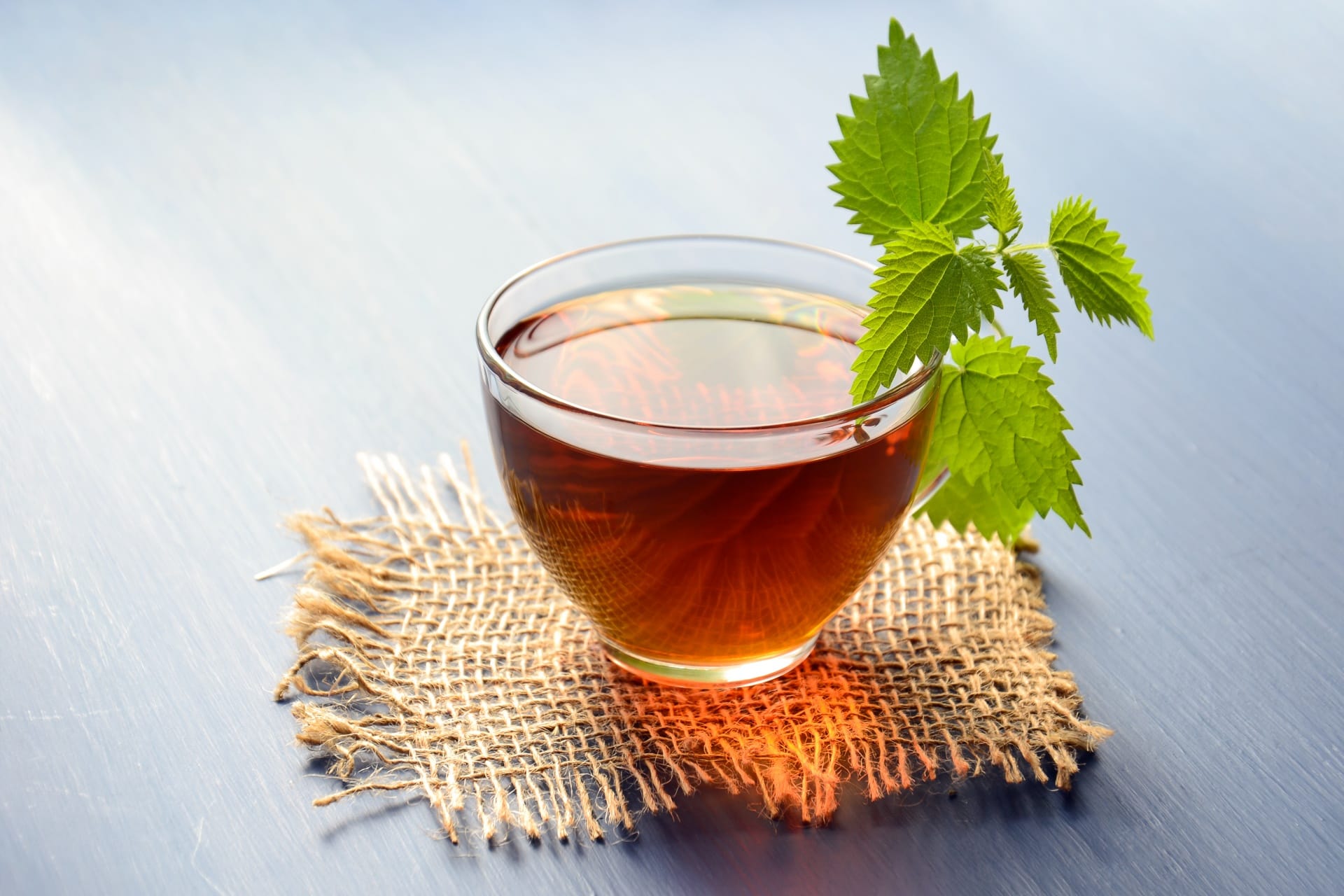Welcome to the Herbal Empire, where natural remedies await! We’ll be your guide as you explore the world of herbs, teas, essential oils, and supplements, uncovering their potential to enhance your well-being. Whether you’re a seasoned herbal enthusiast or just starting your journey, this guide empowers you with the knowledge and resources to harness the power of nature for optimal health.
Herbal Empire: A Natural Wellness Journey
Curious about the power of plants and how they can help you feel your best? Step into the fascinating world of “Herbal Empire.” It’s not a physical place, but a community of people and companies passionate about natural wellness. One company, also called “Herbal Empire,” represents this dedication by providing high-quality herbal products.
Herbal Empire: More Than Just a Name
“Herbal Empire” carefully selects, grows, and processes their botanicals to ensure quality. They offer a wide range of products, from potent K2 sprays and edibles to soothing skincare and specialized yoni steams for women’s health.
What’s in the Herbal Empire Treasure Chest?
“Herbal Empire” is committed to quality and effectiveness. Their K2 products are known for their strength and come in various forms, including edibles and sprays, to suit different preferences.
Beyond K2, “Herbal Empire” offers a wider range of wellness products:
- Skincare: Formulated with natural ingredients.
- Yoni Steams: Specially blended for women’s health.
Navigating the Herbal Empire
“Herbal Empire” operates through multiple websites, each with a slightly different focus. This allows them to cater to a broader range of people, from seasoned K2 users to those just beginning to explore natural wellness.
Talking About Legality and Safety
The world of K2 products is complex, especially regarding legal regulations and safety concerns. “Herbal Empire” acknowledges this and provides information about the legal status and potential effects of K2, empowering you to make informed decisions.
The Herbal Empire is Always Growing
“Herbal Empire” continuously looks for ways to improve and expand their product line. They aim to stay at the forefront of the natural wellness industry, offering a dynamic selection of products that meet their customers’ evolving needs.
Ready to Explore?
Whether you’re an herbal expert or curious about natural alternatives, “Herbal Empire” welcomes you. With their focus on quality, transparency, and innovation, they can be a valuable resource on your personal wellness journey.
Herbal Remedies and Supplements: Nature’s Medicine Cabinet
Herbal remedies and supplements are plant-based products used by people across cultures for centuries to support health and well-being.
They come in various forms:
- Capsules & Tablets: Convenient and easy to swallow.
- Teas: Enjoy a soothing and flavorful experience.
- Tinctures: Offer a more concentrated dose.
- Extracts: Capture the essence of the plant.
Popular herbal remedies and supplements include:
- Aloe Vera: Soothes burns and skin irritations.
- Arnica: Used for muscle soreness and bruising.
- Chamomile: Promotes relaxation and sleep.
- Echinacea: May help boost the immune system.
- Garlic: Known for its potential antimicrobial and cardiovascular benefits.
- Ginkgo Biloba: May support memory and cognitive function.
- Turmeric: Possesses anti-inflammatory properties.
Safety First:
While herbal remedies are generally gentle, it’s essential to remember that “natural” doesn’t always mean “safe.” Here’s why:
- Potential Side Effects: Herbs can still cause side effects, just like any other health product.
- Drug Interactions: They can interact with medications, so consult your doctor before use, especially if you have existing health conditions or are pregnant or breastfeeding.
- Quality Control: Choose reputable brands that are transparent about their ingredients and conduct third-party testing.
Benefits of Herbal Remedies: A Closer Look
With the increasing popularity of natural remedies, herbal remedies are getting a lot of attention. Here’s why:
- Ancient Wisdom, Modern Science: Herbal remedies draw upon centuries of traditional use, and modern research is uncovering the science behind their effectiveness.
- Gentle and Holistic: They are generally considered gentle on the body, offering a holistic approach to wellness.
- Variety and Accessibility: They come in various forms, making it easy to find what suits your preferences.
Choosing Wisely:
- Quality Matters: Look for certifications from reputable organizations like the American Herbal Products Association (AHPA).
- Listen to Your Body: Pay attention to how your body feels and start with recommended dosages. If you experience unusual symptoms, stop using the remedy and consult a healthcare professional.
- Herbs and Modern Medicine: Remember that herbal remedies are not a replacement for medical advice. Consult your doctor, especially if you have underlying health conditions or are taking prescription medications.
- Ongoing Research: The world of herbal remedies is constantly evolving as researchers continue to explore the potential benefits of plants.
Popular Herbal Remedies and Their Uses
Let’s explore some well-known herbal remedies and their potential benefits:
- Echinacea: Often used to support the immune system, especially during colds.
- Ginseng: Known for its potential energy-boosting and cognitive-enhancing properties.
- Ginkgo Biloba: May help improve memory and cognitive function.
- Elderberry: Rich in antioxidants and often used to support the immune system during colds and flu.
Safety First:
- Consult Your Doctor: Always talk to your doctor before adding any herbal remedy to your routine, especially if you have existing health conditions or are taking medications.
- Interactions Are Real: Herbs can interact with medications, so be open and honest with your doctor about everything you’re taking.
- Listen to Your Body: Stop using the remedy and contact your doctor if you experience side effects.
- Choose Wisely: Look for reputable brands that are transparent about their ingredients, testing procedures, and sourcing practices.
Choosing High-Quality Herbal Products: A Guide to Savvy Shopping
When choosing herbal products, quality is paramount. Here’s how to be a savvy herbal shopper:
Think About the Source:
- Organic: Look for labels that say “organic,” indicating fewer pesticides and a commitment to environmental sustainability.
- Sustainable and Responsible: Choose brands that practice sustainable harvesting to protect plant species.
- Location: Consider the origin of the herbs and whether the region is known for producing high-quality varieties.
Processing and Quality Control:
- Drying and Storage: Proper drying and storage methods preserve the potency and quality of herbs.
- Extraction Methods: Different extraction techniques, like steeping, simmering, or using alcohol, create different concentrations and types of extracts.
- Third-Party Testing: Look for certifications like GMP (Good Manufacturing Practices) and USP (United States Pharmacopeia), indicating independent lab testing for quality and purity.
- Labeling: A good label should clearly list the plant parts used, the recommended dosage, and any other ingredients.
Dosage and Preparation:
- Forms: Choose the form that best suits your needs and preferences, such as teas, tinctures, capsules, or powders.
- Dosage: Stick to the recommended dosage and consult your doctor or a qualified herbalist if unsure.
- Preparation: Proper preparation methods, such as steeping times for teas or dilution ratios for tinctures, are crucial for effectiveness.
Other Considerations:
- Brand Reputation: Choose companies with a proven track record of quality and transparency.
- Reviews: Use online reviews as a guide but consider them with a grain of salt, as individual experiences can vary.
- Doctor Consultation: Always talk to your doctor, especially if you have any health conditions or are taking medications, before adding herbal products to your routine.
Incorporating Herbal Remedies into Your Wellness Routine: A Holistic Approach
Using herbal remedies is about listening to your body and connecting with nature. Here’s how to seamlessly integrate them into your life:
- Understand Herbalism: Herbalism is the practice of using plants for health and well-being, drawing upon ancient wisdom and modern scientific understanding.
- Explore the Benefits: Herbal remedies can potentially help with various health concerns, from easing aches and inflammation to supporting sleep and promoting relaxation.
- Choose the Right Forms: Enjoy herbal remedies through teas, tinctures, capsules, supplements, or even by incorporating them into your meals and skincare routine.
- Find Your Herbal Allies: Research and experiment with different herbs to find those that work best for your body and health goals. Consult with a qualified herbalist for personalized recommendations.
- Safety First: While generally safe, herbs can interact with medications and have side effects. Always check with your doctor before starting a new herbal regimen, especially if you have existing health conditions or are pregnant or breastfeeding.
Herbal Teas: A World of Flavor and Wellness
Herbal teas are infusions made from various plant parts, offering a delightful way to experience the benefits of herbs.
A Rich History:
People have been using herbal teas for their medicinal properties for centuries. They offer a blend of ancient wisdom and modern wellness practices.
Endless Variety:
Herbal teas go beyond just chamomile and peppermint. There are countless varieties, each with its own unique properties:
- Calming Teas: Lavender, valerian root
- Energizing Teas: Yerba mate, ginseng
- Digestive Teas: Ginger, peppermint
- Immune-Boosting Teas: Elderberry, echinacea
Create Your Own Blends:
One of the most exciting things about herbal teas is the ability to customize them. Combine different herbs to create blends that address your specific needs and preferences.
A Word of Caution:
While herbal teas can be incredibly beneficial, remember that they’re not magic cure-alls. They work best as part of a healthy lifestyle. Consult your doctor before adding herbal teas to your routine, especially if you’re pregnant, breastfeeding, or taking medications.
Health Benefits of Herbal Teas: Sipping Your Way to Wellness
Research suggests that herbal teas may offer a range of health benefits:
- Digestive Support: Herbs like peppermint, ginger, and chamomile can aid digestion by stimulating digestive juices and reducing inflammation in the gut.
- Anti-Inflammatory Effects: Green tea, turmeric tea, and ginger tea are known for their anti-inflammatory properties, which may help reduce inflammation throughout the body.
- Immune System Support: Elderberry tea, echinacea tea, and ginger tea are often used to support the immune system, especially during cold and flu season.
- Sleep Enhancement: Chamomile, lavender, and valerian root teas are known for their relaxing and sleep-promoting properties.
- Stress Reduction: Sipping on chamomile, lavender, or valerian root tea can help calm the nervous system and reduce stress levels.
Finding Your Perfect Cup:
- Consider Your Needs: Choose teas that align with your health goals, whether you’re seeking relaxation, digestive support, or immune system enhancement.
- Experiment with Blends: Don’t be afraid to try different herbal combinations to find your favorites.
- Quality Matters: Opt for teas made with organic ingredients whenever possible.
Brewing Herbal Tea:
- Choose Your Herbs: Select your desired herbs or tea blend.
- Heat Water: Bring fresh water to a boil, then let it cool slightly for delicate herbs.
- Steep: Place the herbs in a teapot or mug and pour hot water over them. Steep for 5-10 minutes, depending on the herbs and desired strength.
- Strain and Sweeten: Strain out the herbs and sweeten with honey or your preferred natural sweetener if desired.
Popular Herbal Tea Blends and Their Properties
Here are some popular herbal tea blends and their potential benefits:
Soothing Sips:
- Chamomile: Known for its calming and relaxing effects, often used to ease stress, anxiety, and insomnia.
- Peppermint: A refreshing tea that can aid digestion, relieve bloating, and soothe upset stomachs.
Warming Wonders:
- Ginger: A spicy and warming tea that can help relieve nausea, ease cold symptoms, and reduce inflammation.
Health Boosters:
- Green Tea: Rich in antioxidants and associated with various health benefits, including heart health support and potential cancer-fighting properties.
- Black Tea: A flavorful and energizing tea that may improve focus and concentration.
Important Note:
While herbal teas can be beneficial, consult your doctor before adding them to your routine, especially if you’re pregnant, breastfeeding, or have underlying health conditions.
Brewing the Perfect Cup of Herbal Tea: A Step-by-Step Guide
Brewing herbal tea is simple yet rewarding. Here’s a guide to help you create the perfect cup:
Quality Ingredients:
- Choose Organic: Opt for organic herbs whenever possible to avoid pesticides and herbicides.
- Whole-Leaf Herbs: Use whole-leaf herbs for the best flavor and aroma.
- Loose-Leaf vs. Tea Bags: Loose-leaf tea offers more control over the brewing process, but tea bags are convenient.
Measure Carefully:
- General Guideline: Use one teaspoon of dried herbs per cup of water.
- Adjust to Taste: Experiment to find the perfect ratio for your preferences.
Water Temperature:
- Boiling for Most: Use boiling water for most herbal teas, as it helps extract the flavors and beneficial compounds.
- Simmer for Delicates: For delicate herbs like chamomile and lavender, use slightly cooled water to prevent bitterness.
Steeping Time:
- Follow Recommendations: Steep times vary depending on the herb and desired strength. Generally, 5-10 minutes is a good starting point.
- Taste Test: Taste the tea periodically to find your preferred steeping time.
Strain and Savor:
- Strain Properly: Use a strainer to remove the herbs before drinking.
- Enjoy the Aroma: Take a moment to appreciate the aroma of your tea before taking your first sip.
Exploring Different Herbal Tea Brands and Sourcing: A Guide to Ethical Choices
When choosing herbal tea brands, consider their sourcing practices and commitment to sustainability:
Brand Values:
- Ethical Sourcing: Look for brands that prioritize fair trade practices and support the communities where their herbs are grown.
- Quality: Choose brands that use high-quality, organic ingredients and follow sustainable farming practices.
- Transparency: Support brands that are transparent about their sourcing and production processes.
Ethical and Sustainable Sourcing:
- Organic Certification: Look for labels from reputable organic certification bodies, such as the USDA Organic seal.
- Fair Trade: Fair trade certification ensures that farmers and workers are paid fair wages and work in safe conditions.
Why It Matters:
- Supporting Ethical Practices: Choosing ethically sourced teas ensures that your purchase makes a positive impact on the lives of farmers and workers.
- Environmental Sustainability: Sustainable sourcing practices help protect the environment and ensure the long-term viability of herb production.
Do Your Research:
- Brand Websites: Visit the brand’s website to learn about their values, sourcing practices, and certifications.
- Third-Party Certifications: Look for certifications from reputable organizations like Fair Trade USA and Rainforest Alliance.
- Connect with Brands: Don’t hesitate to reach out to brands directly with any questions you may have.
Understanding Aromatherapy and Essential Oils: Nature’s Aromatic Allies
Aromatherapy is the practice of using essential oils to enhance well-being. Essential oils are highly concentrated extracts from plants, capturing their aromatic and therapeutic properties.
The Power of Essential Oils:
- Complex Compounds: Essential oils contain a variety of compounds that can interact with the body’s systems.
- Aromatic Influence: When inhaled, essential oil molecules travel to the olfactory bulb, which is connected to the limbic system, the part of the brain responsible for emotions, memory, and behavior.
- Topical Application: When applied topically, essential oils can be absorbed through the skin, potentially providing localized benefits.
Aromatherapy in Action:
- Diffusion: Using an essential oil diffuser is a popular way to disperse essential oils into the air, creating a calming or uplifting atmosphere.
- Topical Use: Essential oils can be diluted in carrier oils and applied to the skin for massage, aromatherapy blends, or skincare.
- Inhalation: Inhaling essential oils directly from the bottle or using an inhaler can provide quick relief from congestion or promote relaxation.
Choosing Essential Oils:
- Quality Matters: Look for 100% pure essential oils from reputable brands. Avoid synthetic fragrances or oils that have been diluted with other substances.
- Research and Experiment: Each essential oil has its own unique aroma and properties. Research and experiment to find the oils that work best for you.
- Safety Considerations: Essential oils are potent and should be used with caution. Always dilute them with a carrier oil before applying them to the skin, and avoid contact with eyes and mucous membranes.
Benefits of Aromatherapy for Well-being: Tapping into Nature’s Healing Power
Aromatherapy, the practice of using essential oils, offers a natural approach to enhancing well-being.
Stress and Anxiety Relief:
- Calming Scents: Essential oils like lavender, chamomile, and bergamot are known for their calming and relaxing properties, potentially helping to reduce stress levels and ease anxiety.
- Neurotransmitter Influence: Some essential oils may interact with neurotransmitters in the brain, promoting relaxation and reducing stress hormones.
Mood Enhancement:
- Uplifting Aromas: Citrus oils, such as lemon and orange, are often used to uplift mood and promote a sense of well-being. Floral essential oils, like rose and geranium, may also have mood-enhancing effects.
- Hormonal Balance: Some essential oils, like ylang-ylang, are believed to help balance hormones, which can positively impact mood.
Sleep Improvement:
- Relaxation and Sleep: Lavender oil is a popular choice for promoting sleep. Its calming aroma and potential sedative effects can help improve sleep quality and reduce insomnia.
Pain Management:
- Anti-Inflammatory Properties: Essential oils like eucalyptus, peppermint, and rosemary possess anti-inflammatory properties that may help reduce pain by targeting inflammation in the body.
- Topical Relief: Applying diluted essential oils to sore muscles or joints can provide localized pain relief.
Cognitive Enhancement:
- Mental Clarity and Focus: Rosemary and peppermint essential oils are believed to enhance alertness, focus, and cognitive performance.
- Memory Support: Rosemary oil has been studied for its potential to improve memory and cognitive function.
Other Benefits:
- Immune Support: Some essential oils, like tea tree, oregano, and eucalyptus, have antimicrobial properties that may help support the immune system.
- Digestive Health: Peppermint and ginger essential oils can aid digestion by relieving nausea, bloating, and gas.
- Skin Health: Essential oils like lavender and tea tree oil have soothing and antimicrobial properties that can benefit the skin.
Safety Precautions:
- Dilution: Always dilute essential oils in a carrier oil before applying them to the skin.
- Patch Test: Test a small area of skin before using a new essential oil to check for sensitivities.
- Pregnancy and Children: Consult with a qualified healthcare professional before using essential oils during pregnancy or on young children.
Common Essential Oils and Their Uses: Your Aromatic Toolkit
Here’s a closer look at some common essential oils and their potential benefits:
Relaxation and Sleep:
- Lavender: Known for its calming and relaxing properties, often used to promote sleep, ease anxiety, and reduce stress.
- Chamomile: A gentle and soothing oil that can help calm nerves, reduce anxiety, and promote sleep.
Energy and Focus:
- Peppermint: An invigorating and refreshing oil that can help boost energy levels, improve focus, and relieve headaches.
- Rosemary: Known for its stimulating properties, rosemary oil can help improve memory, focus, and mental clarity.
Pain Relief:
- Eucalyptus: Often used to relieve respiratory congestion, eucalyptus oil can also be used topically to soothe muscle pain and joint stiffness.
- Peppermint: Its cooling sensation can help relieve headaches, muscle soreness, and joint pain.
Skin Care:
- Tea Tree Oil: A powerful antimicrobial oil that can help treat acne, fungal infections, and minor cuts and scrapes.
- Lavender: Its soothing and anti-inflammatory properties make it beneficial for a wide range of skin conditions, including acne, eczema, and psoriasis.
Safety Reminder:
Always dilute essential oils in a carrier oil before applying them to the skin, and perform a patch test to check for sensitivities. If you have any health conditions or are pregnant or breastfeeding, consult with a qualified healthcare professional before using essential oils.
Safety Precautions and Dilution Guidelines: Using Essential Oils Wisely
Essential oils are potent and should be used with care. Here’s what you need to know about safe dilution and usage:
Dilution is Key:
- Why Dilute? Diluting essential oils in a carrier oil helps reduce the concentration, making them gentler on the skin and minimizing the risk of irritation.
- Carrier Oils: Common carrier oils include jojoba oil, almond oil, coconut oil, and grapeseed oil.
- Dilution Ratio: A general guideline is to use 2-3% dilution for adults, which means adding 12-18 drops of essential oil to every ounce of carrier oil.
Patch Test:
- Why It’s Important: Everyone’s skin is different, and even diluted essential oils can cause irritation or allergic reactions in some individuals.
- How to Do It: Dilute a small amount of essential oil in a carrier oil and apply it to a small area of skin, such as the inside of your wrist. Wait 24 hours to see if any reaction occurs.
Storage:
- Protect from Light and Heat: Store essential oils in a cool, dark place, away from direct sunlight and heat.
- Airtight Containers: Use amber or cobalt blue glass bottles to protect the oils from light degradation.
Essential Oil Safety Tips:
- Avoid Internal Use: Do not ingest essential oils unless under the guidance of a qualified healthcare professional.
- Keep Away from Children and Pets: Essential oils can be toxic to children and pets if ingested or applied improperly.
- Pregnancy and Breastfeeding: Consult with your doctor before using essential oils if you are pregnant or breastfeeding.
Creating a Relaxing Aromatherapy Experience at Home: Turning Your Space into a Sanctuary
Transform your home into a tranquil oasis with these aromatherapy tips:
Set the Mood:
- Dim the Lights: Create a calming ambiance by dimming the lights or using soft lighting.
- Light Candles: Scented candles or flameless candles create a cozy and inviting atmosphere.
- Play Soothing Music: Put on some relaxing music or nature sounds to help you unwind.
Choose Your Oils:
- Lavender: Known for its calming and relaxing properties, lavender oil is perfect for promoting sleep and easing anxiety.
- Chamomile: A gentle and soothing oil that can help calm nerves and promote relaxation.
- Bergamot: A citrusy oil that can help uplift mood and reduce stress.
Use a Diffuser:
- Ultrasonic Diffusers: These diffusers use water and ultrasonic vibrations to create a fine mist of essential oils.
- Nebulizing Diffusers: These diffusers do not use water and create a more potent aroma.
Other Methods:
- Direct Inhalation: Simply open a bottle of essential oil and inhale deeply.
- Tissue Inhalation: Add a few drops of essential oil to a tissue and hold it near your nose.
- Aromatherapy Baths: Add a few drops of diluted essential oil to your bathwater for a relaxing and therapeutic soak.
- Topical Application: Dilute essential oils in a carrier oil and massage them into your skin.
The Rise of Organic Herb Farms: A Growing Trend in Sustainable Agriculture
Organic herb farms are experiencing a surge in popularity as consumers become increasingly conscious of their health and the environment.
Driving Forces:
- Demand for Natural Products: People are seeking natural alternatives to conventional products, including herbs for culinary, medicinal, and wellness purposes.
- Health Awareness: Consumers are more aware of the potential health benefits of organic herbs, which are grown without synthetic pesticides, herbicides, and fertilizers.
- Environmental Concerns: Organic farming practices are environmentally friendly, promoting soil health, biodiversity, and water conservation.
- Transparency and Traceability: Organic certification provides consumers with assurance that the herbs they’re buying meet strict standards and can be traced back to their source.
Benefits of Organic Herbs:
- Nutrient-Rich: Organic farming practices, such as crop rotation and composting, enrich the soil, which can lead to herbs with higher levels of vitamins, minerals, and antioxidants.
- Chemical-Free: Organic herbs are grown without the use of synthetic pesticides, herbicides, and fertilizers, minimizing exposure to potentially harmful substances.
- Environmental Benefits: Organic farming practices help protect the environment by reducing soil erosion, water pollution, and greenhouse gas emissions.
Challenges and Opportunities:
- Cost: Organic farming often requires more labor and resources, which can result in higher prices for organic herbs.
- Certification: The process of becoming certified organic can be challenging and time-consuming.
- Market Demand: While demand for organic herbs is growing, it’s still a relatively small niche market.
The Future of Organic Herb Farming:
- Continued Growth: As consumer demand for natural and sustainable products continues to rise, organic herb farming is expected to expand.
- Innovation: Farmers are constantly developing new and innovative techniques to improve the efficiency and sustainability of organic herb production.
- Consumer Education: Increased consumer awareness of the benefits of organic herbs will drive further demand and support the growth of the industry.
Benefits of Organic Herb Farming Practices: A Deeper Dive into Sustainability
Organic herb farming goes beyond simply avoiding synthetic chemicals. It’s a holistic approach to agriculture that focuses on working with nature to create healthy ecosystems and produce high-quality herbs.
Environmental Benefits:
- Reduced Chemical Use: Organic farming eliminates the use of synthetic pesticides, herbicides, and fertilizers, protecting soil health, water quality, and beneficial insects.
- Enhanced Biodiversity: Organic farms often have a greater diversity of plants and insects, which creates a more balanced and resilient ecosystem.
- Improved Soil Health: Organic farming practices, such as composting and cover cropping, improve soil fertility, structure, and water retention.
Health and Quality Benefits:
- Increased Nutrient Density: Healthy soil, combined with the absence of synthetic chemicals, can lead to herbs with higher levels of vitamins, minerals, and antioxidants.
- Reduced Chemical Residues: Organic herbs are free from residues of synthetic pesticides, herbicides, and fertilizers that can be harmful to human health.
Economic and Social Benefits:
- Sustainable Practices: Organic farming promotes long-term sustainability by protecting natural resources and minimizing environmental impact.
- Local Economies: Supporting organic farms often benefits local economies by creating jobs and keeping money within communities.
- Ethical Considerations: Organic farming is often associated with fair labor practices and a commitment to animal welfare.
Finding and Supporting Local Herb Farms: Connecting with Your Community’s Growers
Buying herbs from local farms offers numerous benefits, both for you and your community.
Benefits of Buying Local:
- Freshness: Locally grown herbs are often harvested at their peak, providing optimal flavor and nutrition.
- Community Support: Buying from local farms directly supports farmers and their families, contributing to the local economy.
- Reduced Environmental Impact: Transporting herbs over long distances uses fossil fuels that release greenhouse gases. Buying local reduces your carbon footprint.
- Seasonal Variety: Local farms offer a wide variety of herbs that are in season, allowing you to explore new flavors and culinary adventures.
Finding Local Herb Farms:
- Farmers’ Markets: Farmers’ markets are a great way to meet local farmers, ask questions about their growing practices, and sample their produce.
- Community Supported Agriculture (CSA): CSAs allow you to subscribe to a farm’s harvest and receive regular deliveries of fresh produce, often including herbs.
- Online Directories: Several online directories, such as LocalHarvest.org and EatWild.com, list local farms in your area.
- Social Media: Many local farms have a presence on social media, where they share information about their products and events.
Supporting Local Herb Farms:
- Buy Direct: Visit local farms and purchase herbs directly from the growers.
- Spread the Word: Tell your friends, family, and neighbors about your favorite local herb farms.
- Attend Events: Many local farms host events, such as farm-to-table dinners and workshops, that allow you to connect with the farmers and learn more about their practices.
Tara’s Herbs: A Local Success Story
Tara’s Herbs, a family-run farm in Sonoma County, exemplifies the benefits of local and sustainable herb production. They prioritize organic growing practices, community education, and high-quality herbs. Their commitment has earned them loyal customers and recognition within the community.
Tips for Starting Your Own Herb Garden: From Seed to Harvest
Growing your own herbs is a rewarding experience. Here are some tips to get you started:
Choose the Right Location:
- Sunlight: Most herbs need at least 6 hours of sunlight per day, so choose a sunny spot.
- Drainage: Make sure the soil drains well. If you have heavy clay soil, consider building a raised bed or amending the soil with organic matter to improve drainage.
- Space: Herbs don’t need a lot of space to thrive. You can grow them in containers on a patio, balcony, or windowsill.
Select Your Herbs:
- Culinary Favorites: Start with herbs you use most often in cooking, such as basil, parsley, oregano, and thyme.
- Medicinal Herbs: If you’re interested in using herbs for medicinal purposes, consider growing chamomile, lavender, or peppermint.
- Perennials vs. Annuals: Perennials, such as rosemary and thyme, come back year after year, while annuals, such as basil and dill, need to be replanted each year.
Planting:
- Soil: Herbs prefer well-drained soil that is slightly acidic to neutral in pH. You can purchase potting mix specifically formulated for herbs.
- Seeds vs. Starts: You can start herbs from seeds or purchase seedlings from a local nursery. Starting from seeds can be more economical but requires more time and patience.
- Spacing: Space your herbs according to their mature size. Overcrowding can lead to disease and poor growth.
Care:
- Watering: Water herbs deeply but allow the soil to dry out slightly between waterings. Overwatering can lead to root rot.
- Fertilizing: Herbs generally don’t need a lot of fertilizer. A light feeding with organic fertilizer once or twice a month during the growing season is sufficient.
- Pruning: Regular pruning encourages bushier growth and prevents herbs from becoming leggy.
Sustainable Practices for Herb Cultivation: Working with Nature
Sustainable herb cultivation involves practices that protect the environment, conserve resources, and ensure the long-term health of the ecosystem.
Organic Farming:
- Soil Health: Organic farming practices, such as composting and cover cropping, build healthy soil, which is essential for plant growth and disease resistance.
- Pest Management: Instead of using synthetic pesticides, organic farmers rely on natural methods, such as beneficial insects, crop rotation, and companion planting, to control pests.
- Weed Control: Organic weed control methods, such as mulching and hand-weeding, minimize the use of herbicides and promote soil health.
Water Conservation:
- Drip Irrigation: Drip irrigation systems deliver water directly to the roots of plants, reducing water waste and evaporation.
- Mulching: Mulching helps retain soil moisture, reducing the need for frequent watering.
- Rainwater Harvesting: Collecting rainwater in barrels or cisterns provides a sustainable source of water for irrigation.
Ethical Sourcing:
- Fair Trade: Fair trade certification ensures that farmers and workers are paid fair wages and work in safe conditions.
- Sustainable Harvesting: Sustainable harvesting practices ensure that herbs are harvested in a way that doesn’t harm the plant or its environment.
Regenerative Agriculture:
- Soil Building: Regenerative agriculture practices, such as no-till farming and cover cropping, build healthy soil, sequester carbon, and improve water retention.
- Biodiversity: Regenerative agriculture promotes biodiversity by creating habitats for beneficial insects, birds, and other wildlife.
Exploring Different Types of Herbal Supplements: Capsules, Teas, and More
Herbal supplements offer a convenient way to incorporate the benefits of herbs into your daily routine.
Herbal Extracts:
- Concentration: Herbal extracts are concentrated forms of herbs that are typically made by soaking herbs in a solvent (water, alcohol, or glycerin) to extract the desired compounds.
- Potency: Extracts are typically more potent than dried herbs, meaning you need to take a smaller dose to achieve the desired effect.
Forms of Herbal Supplements:
- Capsules and Tablets: Convenient and easy to swallow, capsules and tablets contain a pre-measured dose of herbal extract.
- Powders: Herbal powders can be mixed into smoothies, yogurt, or other foods and beverages.
- Teas: Herbal teas are infusions made by steeping herbs in hot water.
- Tinctures and Liquid Extracts: Tinctures are typically alcohol-based extracts, while liquid extracts can be alcohol-based or glycerin-based. They are usually taken in small doses, a few drops at a time.
Popular Herbal Supplement Categories:
- Adaptogens: Herbs that help the body adapt to stress, such as ashwagandha, rhodiola, and holy basil.
- Immune Support: Herbs that may help boost the immune system, such as echinacea, elderberry, and astragalus.
- Digestive Health: Herbs that can aid digestion and soothe digestive discomfort, such as ginger, peppermint, and fennel.
- Sleep Enhancement: Herbs that promote relaxation and sleep, such as valerian root, chamomile, and passionflower.
- Cognitive Function: Herbs that may support memory, focus, and overall cognitive function, such as ginkgo biloba, bacopa monnieri, and lion’s mane mushroom.
Safety Considerations:
- Quality: Choose herbal supplements from reputable brands that prioritize quality and transparency.
- Dosage: Follow dosage instructions carefully and consult with a healthcare professional if unsure.
- Drug Interactions: Herbal supplements can interact with medications, so talk to your doctor before taking them, especially if you have any health conditions.
Understanding Dosage and Potential Interactions: Using Herbal Supplements Safely
While herbal supplements are generally safe, it’s important to use them responsibly and be aware of potential interactions and side effects.
Dosage:
- Recommended Dosage: Always follow the dosage instructions on the product label.
- Individual Needs: Dosage may vary depending on factors such as age, weight, health conditions, and the potency of the herbal supplement.
- Start Low, Go Slow: It’s generally best to start with a low dose and gradually increase it as needed, monitoring your body’s response.
Potential Interactions:
- Medications: Herbal supplements can interact with prescription and over-the-counter medications, potentially altering their effectiveness or increasing the risk of side effects.
- Other Supplements: Herbal supplements can interact with other supplements, so it’s important to be aware of potential interactions.
- Health Conditions: Certain herbal supplements may not be safe for people with certain health conditions, such as liver or kidney disease.
Talk to Your Doctor:
- Before Starting: It’s always best
- Unlocking Francis Alexander Shields’ Finance Empire: A Comprehensive Biography - July 12, 2025
- Unveiling Francis Alexander Shields: A Business Legacy - July 12, 2025
- Francis Alexander Shields’ Business Career: A Comprehensive Overview - July 12, 2025















